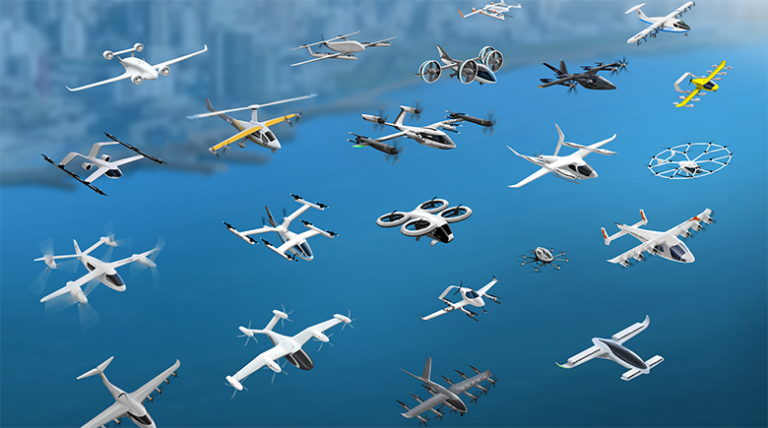With the advent of eVTOL aircraft, aviation is experiencing a wave of innovation. This is causing a wealth of R&D funding into new and existing aerospace engineering companies – some are helicopter companies, some are airplane companies and others include startups who have only recently completed their initial prototypes.
Regardless of the size of the company, all new aircraft need to be certified by the Federal Aviation Industry (FAA), European Aviation Safety Agency (EASA) and in the UK, the Civil Aviation Authority (CAA). These regulators ensure aircraft are safe and reliable enough to fly the public. As those familiar with the process well know, certification is a rigorous engineering process that requires a vast amount of simulation and testing.
Most new eVTOL aircraft companies are considering brand new combinations of tilt-rotors, tilt-wings, all-composite fuselages, fly-by-wire control systems, and rechargeable electric battery systems that have never been seen before in the world of aviation. Engineers will need vast amounts of simulation and testing to raise these new technologies to the levels needed for the eVTOL industry to become widespread.
Certification similarities
To achieve certification, eVTOL must pass regulations in three distinct categories: type certification, production certification, and operational authorization. The first refers to the model design, the second to the production of that model, and the third to the pilots themselves.
Technically, each eVTOL aircraft will go through certification differently. But while the details vary – wings are shaped differently, fuselages have windows in different places, rotors are different sizes and thus require different testing regimes – the basics stay the same.
Before simulation software existed, if a company had a prototype aircraft that needed to be certified, they would use hand calculations as much as possible to make sure the fundamentals of stress and strain were covered when it came to the ultimate material allowable. But most of the complicated parts and assemblies could not be calculated this way – and thus almost every part, mechanism, and assembly needed to be built and tested to prove to regulators that it would work as it was designed to do, and that it would survive in the real world once it was mass produced.
This was a frustratingly long process for aircraft manufacturers worldwide and significantly extended the timeline for achieving certification and getting airborne.
Digital models and prototypes
Today engineers have been working towards making the simulation process faster, easier, and more efficient – a recent example being the Gulfstream G650, which was publicly announced as a project in 2008 and was first delivered to a customer just four years later in 2012. Simulation software was a major factor in enabling this nine-year project being delivered in less than half the expected time.
Once simulation has been completed and the initial prototypes have been built, the testing of a prototype can begin.
Testing requires a massive amount of time and effort to make sure everything behaves as it should in the air, and that these parts, sub-assemblies, and full assembly mechanisms work and perform the same way that the analysis predicted. As an important data point, the FAA and EASA require that the test results must correlate to the predicted results from the simulation within 10% (or less) for the simulation to be accepted and considered “validated” for certification.
Though this 10% mark is overwhelmingly standard for certification, some OEM’s strive for much higher levels of agreement (5% or less) but lower levels of agreement on non-critical items can be considered satisfactory as well. Depending on the configuration, thousands, tens of thousands, or more load cases need to be simulated in this way.
In addition, hundreds of tests need to be done to, among other things, validate that the simulations that were previously done were correct, and that the data correlates well to it.
Digital twins
This is when the term “digital twin” starts to make sense to an engineer – it is when the as-manufactured part behaves and performs exactly as predicted in the analysis (or close to it). It is only natural that aerospace companies worldwide have created initiatives to reduce or replace specific amounts of testing with engineering simulation.
When the as-manufactured part behaves and performs exactly as predicted in the analysis (or close to it), confidence is built in the accuracy and integrity of the engineering analysis performed prior to manufacturing, and thus accurate predictions can be made with these engineering models. To achieve this close level of correlation, test and analysis must be in partnership to successfully develop and achieve faster certification for a new eVTOL.
It is vital that companies embrace not only a verification management digital thread, but also a full digitalization strategy. Digitalization enables eVTOL manufacturers to make better-informed decisions based on extensive data and analysis as well as full traceability. It is the only way to turn the increased level of complexity and integration inherent in new eVTOL programs into a competitive advantage and achieve faster certification and go-to-market.
For more information, please visit:





